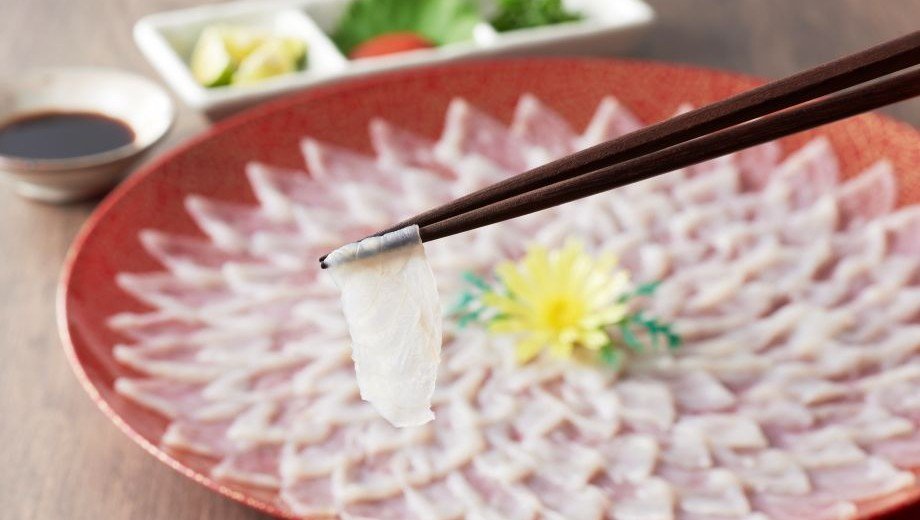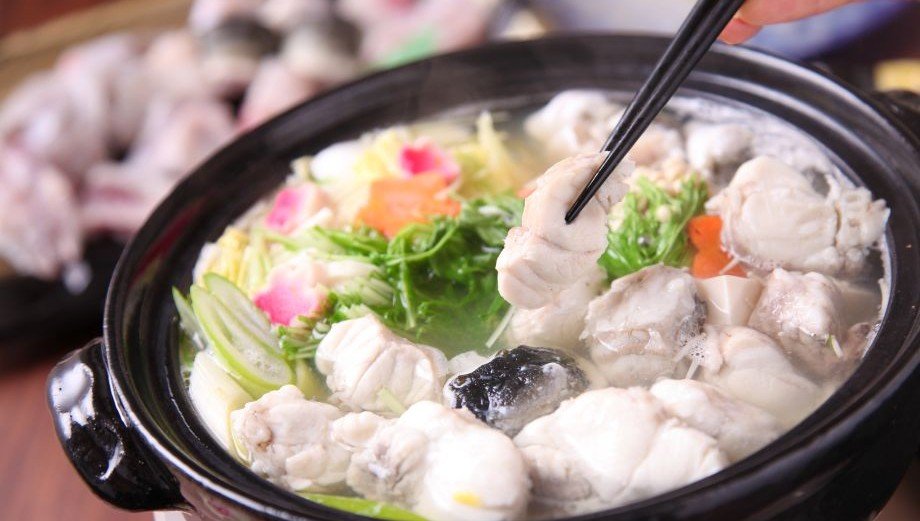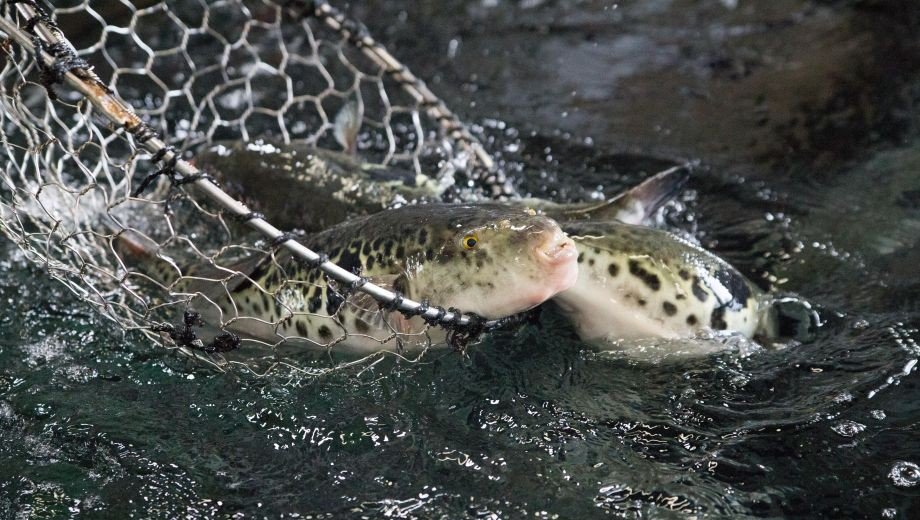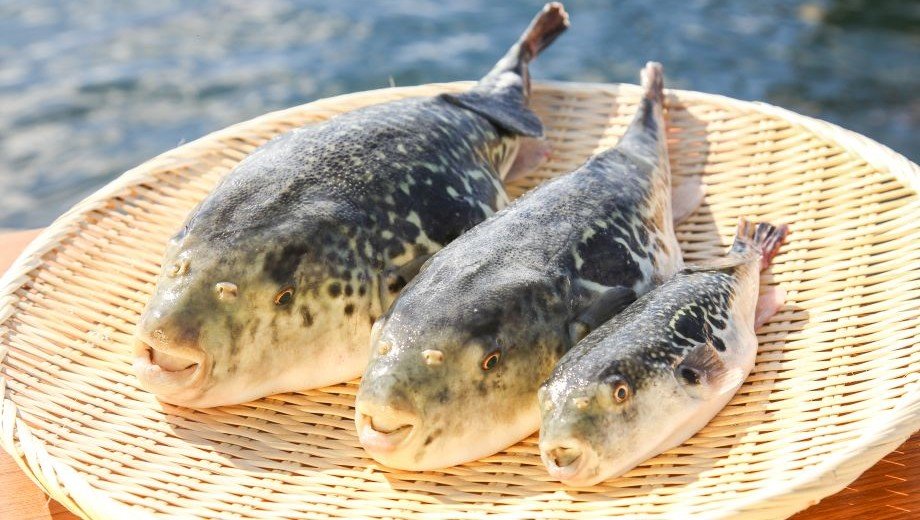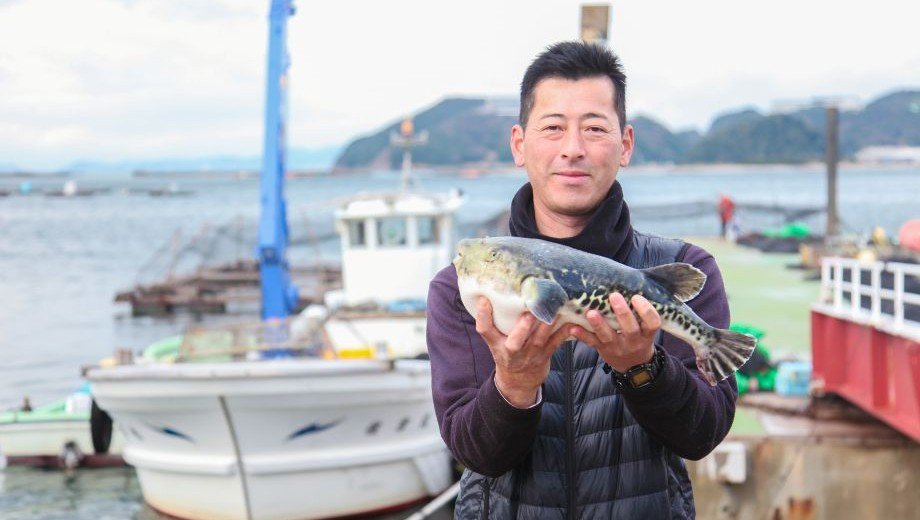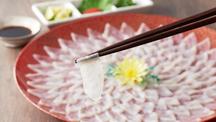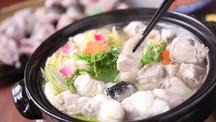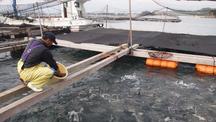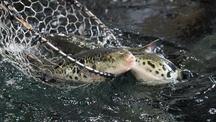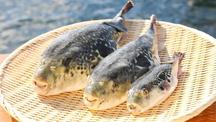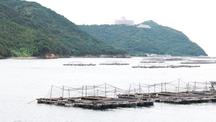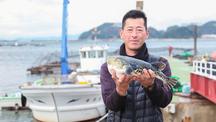Awajishima 3nen Torafugu
| Registration Number | 144 |
|---|---|
| Name of the GI | Awajishima 3nen Torafugu |
| Class | Fish and Shellfish |
| Date of Protection | 2024/01/29 |
| Producing Area |
Hyogo Prefecture
Fukura Bay, Awaji Island |
| Applicant - Name and Address | Fukura Fisheries Cooperatives 28 Fukura Hei, Awaji City, Hyogo Prefecture |
"Awajishima 3nen Torafugu" is a Japanese puffer (1) (Takifugu rubripes) farmed in waters adjacent to the Naruto Strait, where one of the three most significant currents in the world is observed.
Compared to ordinary cultured Japanese puffers, they are 1.5 to 2 times larger and are traded at higher prices because consumers highly recognize them for their firm flesh, pleasant chewiness, and rich taste.
In recent years, there has been an increase in tourists visiting "Torafugu". With the fish attracting visitors during the off-season period for the tourist trade, it has become a representative brand of Awaji Island in the wintertime.
"Awajishima 3nen Torafugu" is farmed and shipped according to the cultivation and shipment standards specified by Fukura Fisheries Cooperative.
The producing area, Fukura Bay, is located near the "Naruto Strait (2)", where one of the most tremendous currents in the world is observed. As the producing waters are influenced by Japan's fastest current, a favorable aquaculture environment for Japanese puffer is created. And fish have to swim more, which helps them to grow into delicious fish with firm flesh and pleasant chewiness.
In Fukura Bay, the aquaculture of hamachi (yellowtail) started around 1962, and that of madai (red sea bream) in the 1980s. Since high-level aquaculture technologies already existed, they were used to commence farming Torafugu in 1982.
Torafugu is quite a nervous fish, and there were times when more than 90% of the fish died before shipment. Its three-year cultivation was a tough challenge.
Fishermen in Fukura District have patiently continued trial and error and worked to improve aquaculture technologies, including monitoring changes in fish's physical conditions by current, water temperature, and the amount of feed, investigating the kind, quality, quantity, frequency, and timing of feeding, devising environmental facilities and nutritional management for keeping the fish healthy and improving taste, and measures for preventing the fish from getting injured. Finally, they succeeded in the industrial production of "3nen Torafugu", the first in Japan.
In 2004, the fish was shipped under the name "3nen Torafugu". Fishermen and diverse parties in the region, such as those engaged in tourism, hotels, and restaurants, have continued advertising the fish.
The production in 2022 was 78,655 fish. The Torafugu is served at about 100 hotels and restaurants and has become anchored as a specialty of the area.
- Japanese puffer (Takifugu rubripes) is said to be the most luxurious fish among all traded edible puffers and is called the "King of Winter Food", ranked with crab for its unique umami and texture. It is captured in all areas of Japan and has been especially popular in Kansai, where it is served in diverse dishes, such as sashimi, pot dishes, grilled fish, and deep-fried fish.
- Naruto Strait is a strait of about 1.3km in width between the Inland Sea (Naruto City, Tokushima Prefecture) and Kii Channel (Awaji City, Hyogo Prefecture). The current is one of the "three greatest currents in the world", the other two being the Strait of Messina in Italy and Seymour Narrows in Canada. The whirlpools generated by the fast current, known as "Naruto no Uzushio", can reach up to 20m in diameter and are a famous tourist spot as they can be observed from cruise ships, etc.

